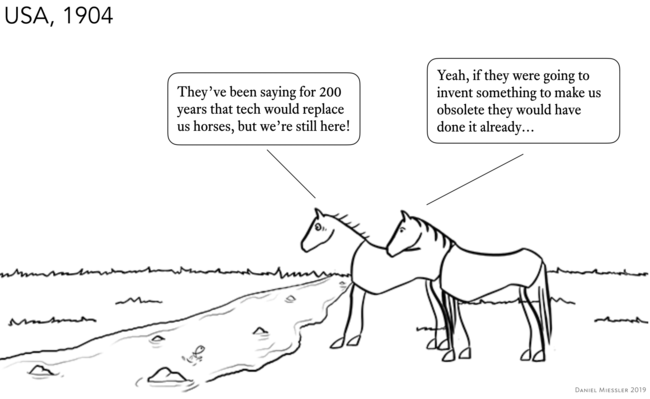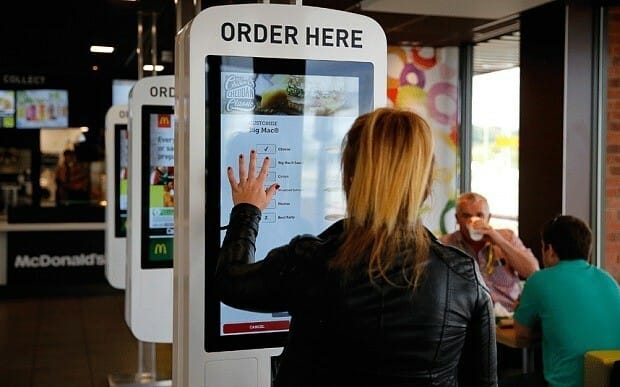Job Losses from Automation Are Being Actively Engineered and Funded

Many people seem to believe that there’s some sort of gentle pressure towards automation, and a counterbalancing gentle pressure towards job creation—and these two things live in happy equilibrium.
That’s a bad model for how the world works, especially today where most businesses are focused more than ever on maximizing margins.
Our move towards automation is active, deliberate, and extremely well-funded.
We’re not gracefully moving towards automation. We’re not just seeing technology slowly seep into our work lives. And this isn’t being counteracted by an opposing force of increased creativity and innovation in our fellow humans.
That’s a fairytale, and one that you should be cautious of.
Wells Fargo just released a report > talking about how great it will be when banking needs 200,000 fewer workers.
What’s happening instead is you have massive industries, like transportation >, banking >, customer service, food service, etc.—all spending billions upon billions of dollars doing active research on how to automate their businesses.

McDonald’s is installing kiosks all over the country
That doesn’t mean just robots, or just machine learning, or whatever kind of tech—it means inventing anything that can reduce the number of unpredictable, flawed, and prone-to-get-sick-or-sue employees that consume a massive percentage of profits every year.
It’s not that these companies hate people—it’s that they hate inefficient and undependable parts of their business that hurt their margins. And people just happen to be those undependable inefficiencies.
Around 3 million people work in customer service, just in the United States.
Think about how bad customer service is, and how fast AI is improving. And then ask yourself where the crossover point is, after which AI becomes a better option going forward.
That point is different based on the industry and use case, but we’ve already crossed it for some, and many more are likely coming soon. When exactly? Nobody can say, but it’s no longer smart or responsible to assume things are resistant by default. We should assume the opposite.
The higher-end the product, the higher the chance you’ll still get a human on the other end when you call for help.
Automated reps don’t get tired. They don’t forget the training they just had on Monday. And you can upgrade them across the entire fleet in a relative instant. And to train more, you largely just copy and paste.
High-end products and services will still have human representatives for the foreseeable future, but most services aren’t high-end. Most customer service calls are extremely monotonous, routine, and simple to resolve. And those calls will increasingly be going to bots and AI-based agents.
Because humans are so static, and the types of things we need on a customer service call are so similar, the AI Customer Service Agent problem is similar to attacks against cryptography. Once you get a foothold, the attacks predictably get better, and they never get worse.
These attacks just happen to be against the experience of meaning humans get from working.
Summary
Human job loss to automation is not some gentle force that gets naturally counterbalanced by new types of work.
Automation is a profit-center, which means humans losing their jobs is a profit-center.
Companies and industries are spending hundreds of billions of dollars to replace humans in their workforces, which will in turn lead to billions more in profits for them.
Most people don’t realize this extremely active and funded component to the equation, and it’s time they start to.
Notes
I couldn’t find the artist who drew the horses, but I did the labeling and captions.